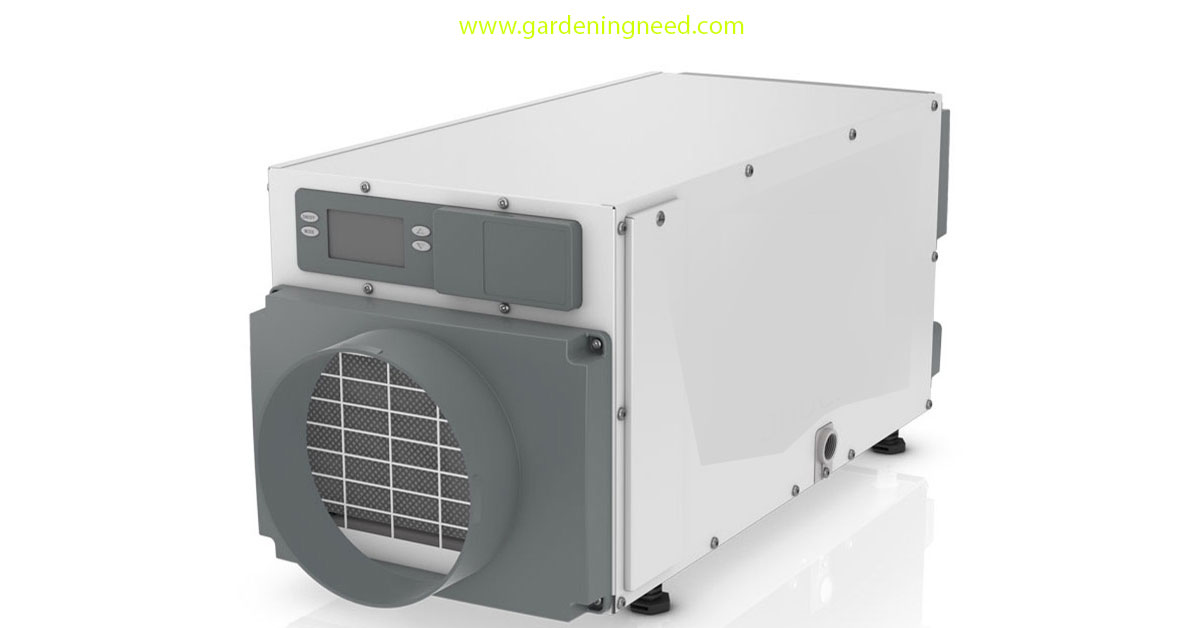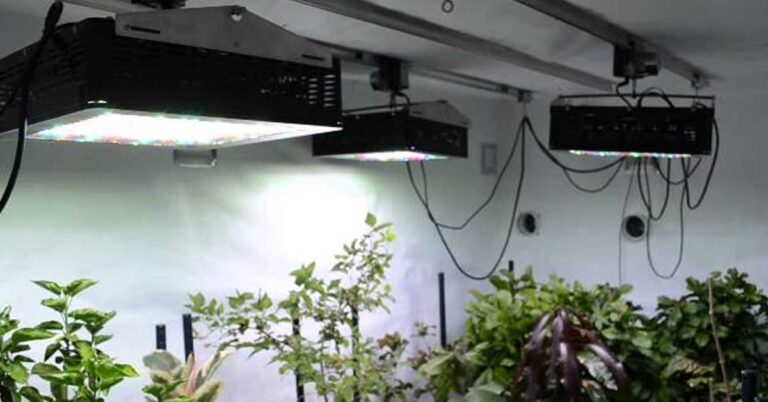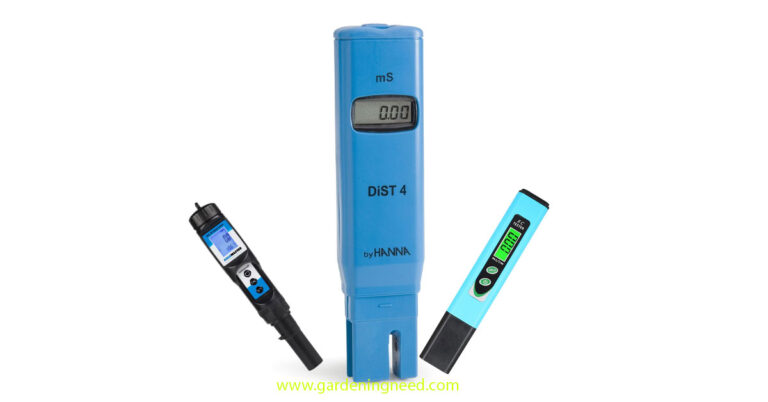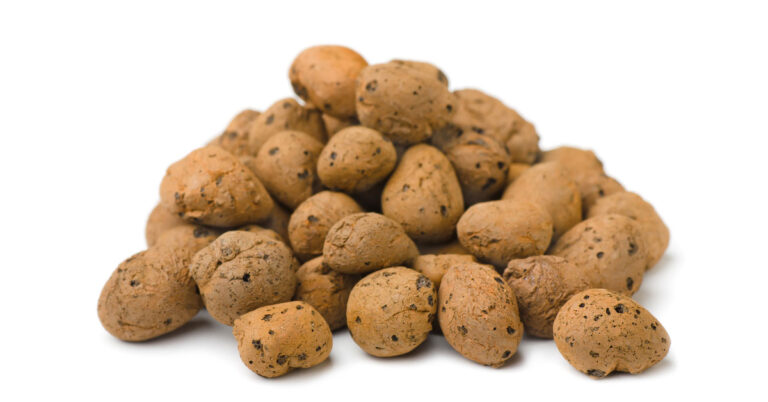Hydroponic Dehumidifier
Hydroponic dehumidifiers are essential for any hydroponic garden, as they help to maintain the optimal humidity levels for healthy plant growth. By removing excess moisture from the air, these dehumidifiers help to prevent mold and mildew from forming and damaging your plants. They also help to reduce the amount of water needed for your hydroponic system, as well as helping to maintain the ideal temperature for optimal growth. With a wide range of models available, you can find the perfect dehumidifier for your hydroponic garden, ensuring that your plants get the best possible care.
What is a Hydroponic Dehumidifier and How Does it Work?
A hydroponic dehumidifier is a device that is used to reduce the amount of moisture in the air of a grow tent or other grow space. It is important to maintain the right relative humidity in a grow space in order to ensure the success of a crop. A hydroponic dehumidifier can help to reduce excess moisture in the air and provide ideal conditions for growing plants.
Hydroponic dehumidifiers come in a variety of sizes and styles, from portable dehumidifiers to mini dehumidifiers to larger dehumidifiers for larger grow spaces. The size of your grow room and the amount of humidity in the air will determine which type of dehumidifier is best for your needs. Some dehumidifiers also come with additional features such as a removable water tank, power consumption, and a built-in handle for easy portability.
The most common type of hydroponic dehumidifier is the compressor dehumidifier. This type of dehumidifier uses a compressor to remove water vapor from the air. This is the most efficient type of dehumidifier and is the best choice for larger grow spaces. Desiccant dehumidifiers are also available and use a different technology called Peltier technology to remove moisture from the air. These dehumidifiers are best for smaller rooms and are usually more affordable than compressor dehumidifiers.
When choosing a hydroponic dehumidifier, it is important to consider the size of your grow room and the amount of humidity in the air. As a general rule, the larger the grow space, the larger the dehumidifier should be. It is also important to consider the power consumption of the dehumidifier and the noise levels. Some dehumidifiers are designed to be quieter than others, so it is important to check the noise levels before making a purchase.
Popular hydroponic dehumidifiers include the Ideal-Air Dehumidifier, Quest Dual Dehumidifier, and L Dehumidifier. Each of these dehumidifiers has its own unique features and specifications, so it is important to read the product descriptions carefully before making a purchase. It is also important to consider the warranty claim and the 30-day money-back guarantee that many of these dehumidifiers offer.
Hydroponic dehumidifiers are an essential part of any hydroponic setup. They help to maintain the ideal humidity levels in a grow space and can help to ensure a successful crop. When choosing a dehumidifier, it is important to consider the size of your grow room, the amount of humidity in the air, and the additional features and specifications of the dehumidifier. With the right dehumidifier, you can have complete control over the humidity levels in your indoor grow room.
Benefits
Using a hydroponic dehumidifier is a great way to ensure that your grow tent or grow space has the ideal relative humidity for your plants. Excess moisture can cause a variety of problems for your plants, so having a portable dehumidifier is essential for successful indoor growing.
When looking for the best dehumidifiers for your hydroponic setup, there are a few key features to consider. Look for a dehumidifier with a removable water tank, mini dehumidifier, and low power consumption. Additionally, look for a dehumidifier with a built-in handle and wheels for easy portability.
The general rule of thumb is that the size of your grow room should be taken into account when selecting a dehumidifier. The larger the room, the more powerful the dehumidifier should be. For example, if you have a larger grow tent, then you may want to consider an Ideal-Air dehumidifier or a Quest Dual dehumidifier.
When it comes to humid climates, a larger dehumidifier is often the best choice. A larger dehumidifier will be able to handle higher humidity levels and will be able to remove more water vapor from the air. Additionally, a larger dehumidifier will also have additional specifications such as a built-in water level detector switch and a power adapter.
For smaller rooms, such as a grow tent, a mini dehumidifier may be the best choice. These dehumidifiers are typically more affordable and can be used in smaller indoor grow rooms. Additionally, they are usually quieter than larger dehumidifiers and have a lower power consumption.
When selecting a dehumidifier for your hydroponic setup, it is important to consider the size of your grow room, the humidity levels, and the type of dehumidifier you need. There are several types of dehumidifiers available, including peltier technology, desiccant dehumidifiers, compressor dehumidifiers, and tent dehumidifiers. Each type of dehumidifier has its own advantages and disadvantages, so it is important to research each type before making a purchase.
When selecting a dehumidifier for your hydroponic setup, it is also important to consider the warranty and return policy. Many dehumidifiers come with a 30-day money-back guarantee, so you can be sure that you are getting the best product for your money. Additionally, some dehumidifiers come with a warranty claim, so if there is an issue with your dehumidifier, you can contact the manufacturer and get a replacement.
Finally, when selecting a dehumidifier for your hydroponic setup, it is important to consider the noise levels. Some dehumidifiers are very quiet, while others can be quite loud. If you are using a dehumidifier in a small room, such as a grow tent, then it is important to select a dehumidifier with a low noise level.
Using a hydroponic dehumidifier is a great way to ensure that your grow tent or grow space has the ideal relative humidity for your plants. With the right dehumidifier, you can have complete control over the humidity levels in your indoor grow room and ensure that your plants get the ideal conditions for successful growth.
Choosing the Right Hydroponic Dehumidifier for Your Grow Room
Choosing the right hydroponic dehumidifier for your grow room is essential for successful indoor cultivation of plants. It is important to consider the size of your grow room, the relative humidity, and the amount of excess moisture when selecting the best dehumidifier for your grow space.
A portable dehumidifier is ideal for small rooms, as it can be easily moved around the grow tent or grow space. It should have a removable water tank and a power adapter, as well as a mini dehumidifier for higher humidity levels. The power consumption should also be taken into account, as well as any additional specifications such as noise levels and water removal ratings.
For larger container and hydroponic farms, an ideal-air dehumidifier or Quest Dual L Dehumidifier is recommended. These units are equipped with a heavy-duty compressor, a built-in handle, and built-in wheels for easy transport. They also come with a 30-day money-back guarantee and a warranty claim.
Desiccant dehumidifiers are ideal for humid climates, as they can handle much higher humidity levels than other types of dehumidifiers. They also come with a built-in auto shut-off feature, a metal casing, and air circulation.
For larger indoor grow rooms, a compressor dehumidifier is recommended. These units are more powerful than other types of dehumidifiers and can handle larger amounts of water vapor. They also come with a built-in handle and wheels for easy transport.
When choosing the right hydroponic dehumidifier for your grow room, it is important to consider the size of your grow room, the relative humidity, and the amount of excess moisture. It is also important to consider the power consumption, noise levels, and water removal ratings. Additionally, it is important to consider the type of hydroponic setup you are using, as well as the number of plants you are growing. Finally, it is important to consider the warranty claim and the 30-day money-back guarantee when selecting the best dehumidifier for your grow space.
Setting Up and Maintaining
Setting up and maintaining a hydroponic dehumidifier is essential for any successful indoor grow room. A dehumidifier helps to regulate the relative humidity in the grow space, removing excess moisture from the air and providing ideal conditions for the indoor cultivation of plants.
When choosing a dehumidifier for your hydroponic setup, it’s important to consider the size of your grow room, the amount of humidity in the air, and the number of plants you plan to grow. Portable dehumidifiers are ideal for small rooms, while larger units are better suited for larger grow spaces. The best dehumidifiers for hydroponic systems are compressor dehumidifiers, which use a heavy-duty compressor to remove water vapor from the air. Peltier technology is also used in some dehumidifiers, but it is not as effective as a compressor dehumidifier.
When shopping for a dehumidifier, look for one with a removable water tank, an auto shut-off feature, and a built-in handle or wheels for easy transport. Some dehumidifiers also come with additional specifications, such as a power adapter, a built-in timer, and a 30-day money-back guarantee. The best dehumidifiers for hydroponic systems are the Ideal-Air Dehumidifier and the Quest Dual Dehumidifier. Both of these units are designed to handle high humidity levels and come with a warranty claim.
When setting up your dehumidifier, it’s important to follow the general rule of thumb for hydroponic systems: one cubic foot of grow space requires one pint of water removal per day. This means that for a 10’x10’ grow tent, you’ll need a dehumidifier that can remove 10 pints of water per day. Additionally, some dehumidifiers come with an automatic water level detector switch, which will shut off the unit when the water tank is full.
Finally, it’s important to maintain your dehumidifier regularly. Check the air filter regularly and clean it as needed. Make sure the unit is plugged in and that the power cord is in good condition. Check the water tank for any signs of corrosion or damage. Finally, check the noise levels of the unit to make sure it is not too loud for your grow space.
Setting up and maintaining a hydroponic dehumidifier is essential for any successful indoor grow room. With the right dehumidifier, you can maintain ideal conditions for your hydroponic setup and ensure a successful crop.
Understanding Relative Humidity and Its Impact on Hydroponic Growth
Understanding Relative Humidity and Its Impact on Hydroponic Growth
Relative humidity is an important factor in the success of hydroponic growth. It is the measure of the amount of water vapor in the air compared to the maximum amount of water vapor the air can hold at a given temperature. In hydroponic systems, it is important to maintain the right relative humidity level to ensure optimal growth of plants.
The ideal relative humidity level for hydroponic growth is between 40 and 70 percent. Too much humidity can lead to excess moisture in the grow space, while too little humidity can cause plants to dry out. To maintain the right humidity level, a portable dehumidifier is often used. There are many different types of dehumidifiers available, from mini dehumidifiers to larger units with removable water tanks and power consumption ratings.
When choosing a dehumidifier for your hydroponic grow tent, it is important to consider the size of your grow room, the power consumption, and any additional specifications you may need. For example, some dehumidifiers come with an automatic water level detector switch, while others have a built-in handle for easy portability.
The Quest Dual is one of the best dehumidifiers for hydroponic growth. It is a powerful compressor dehumidifier with a built-in wheels and metal casing for durability. It also features a 30-day money-back guarantee and a one-year warranty claim. This dehumidifier is perfect for larger container hydroponic systems and can easily be used in a humid climate.
For smaller rooms, the Ideal-Air Dehumidifier is a great choice. This mini dehumidifier uses Peltier technology to reduce humidity levels without the need for a compressor. It also features a power adapter, an auto shut-off feature, and a built-in handle for easy portability.
No matter which type of dehumidifier you choose, it is important to remember that the ideal relative humidity level for hydroponic growth is between 40 and 70 percent. This is a general rule, but it may vary depending on the size of your grow room and the number of plants you are growing.
In addition to using a dehumidifier, it is also important to ensure that your indoor grow room has adequate air circulation. This will help to reduce the humidity levels and ensure that your plants get the ideal conditions for successful crop growth.
Finally, it is important to remember that the use of the website and the collection of personal information are subject to our Privacy Policy. We will not share your information with any third parties, and we will only use it to provide you with the best prices and the most complete control over your hydroponic setup.
How to Troubleshoot Common Issues
Troubleshooting common issues with hydroponic dehumidifiers can be a daunting task. Fortunately, there are some general rules and tips that can help you get the most out of your dehumidifier and ensure successful crop growth.
The first thing to consider when troubleshooting a hydroponic dehumidifier is the size of your grow room. A larger container will require a larger dehumidifier, while a smaller room may require a mini dehumidifier. The size of the dehumidifier will also determine the power consumption and noise levels.
The next step is to determine the relative humidity in your grow space. If the humidity is too high, you may need to invest in a portable dehumidifier. These dehumidifiers come in a variety of sizes and are designed to remove excess moisture from the air. Some of the best dehumidifiers on the market are the Ideal-Air Dehumidifier, Quest Dual, and L Dehumidifier.
If the humidity in your grow space is too low, you may need to invest in a desiccant dehumidifier. These dehumidifiers use peltier technology to absorb water vapor from the air. They are great for hydroponic farms and larger container systems, as they provide complete control over the humidity levels.
Finally, you should consider the type of hydroponic system you are using. Deep water culture systems require higher humidity levels than other types of hydroponic systems. If you are using a deep water culture system, you may need to invest in a larger dehumidifier with a higher water removal rating.
No matter what type of hydroponic system you are using, it is important to keep the humidity levels in your grow space within the ideal range. This will ensure that your plants are getting the moisture they need to thrive. Investing in a quality dehumidifier can help you maintain the ideal conditions for your indoor grow room.
Advantages of Using a Hydroponic Dehumidifier over Other Dehumidification Methods
Hydroponic dehumidifiers offer a number of advantages over other dehumidification methods. They are ideal for use in grow tents, as they are portable and can be moved around easily. They are also more efficient than other dehumidifiers, as they can remove excess moisture from the air more quickly and effectively.
Hydroponic dehumidifiers are designed to keep the relative humidity in a grow space at an ideal level. This is important for successful crop production, as too much humidity can cause problems such as mold and mildew. Hydroponic dehumidifiers come with a removable water tank, so you can easily empty the tank when it is full. Some models also come with a mini dehumidifier, which is great for small rooms.
Hydroponic dehumidifiers are also energy efficient, as they consume less power than air conditioners or other dehumidifiers. As a general rule, the larger the dehumidifier, the more power it will consume. Hydroponic dehumidifiers are also designed with peltier technology, which helps to reduce noise levels.
Hydroponic dehumidifiers come in a variety of sizes, so you can choose one that is the right size for your grow space. They also come with additional specifications, such as an automatic water level detector switch and a much humidity level indicator. Some models also come with a built-in handle and wheels, so you can easily move them around.
The Ideal-Air Dehumidifier and the Quest Dual Dehumidifier are two of the best dehumidifiers for hydroponic systems. They are both designed to be used in humid climates, and they come with a power adapter and a l dehumidifier. They are both designed to maintain a high humidity level in indoor grow rooms, and they both come with a 30-day money-back guarantee.
If you are looking for a smaller dehumidifier for your hydroponic setup, then the Tent Dehumidifier is a great option. It is designed to be used in smaller rooms, and it comes with a built-in handle and wheels. It also has an auto shut-off feature, and it is made of a metal casing for durability.
Hydroponic dehumidifiers are great for controlling the air circulation and humidity levels in an indoor grow room. They are also ideal for controlling the water vapor levels in hydroponic farms and larger containers. With a hydroponic dehumidifier, you have complete control over the humidity levels in your grow space, so you can ensure that your plants get the ideal conditions for growth.
The Role of Temperature
Temperature plays an important role in hydroponic dehumidification. It is essential to maintain the ideal temperature in a grow tent or grow space to ensure the success of your hydroponic setup. The relative humidity of the air in your grow space should be kept between 40 and 60 percent for optimal growth of your plants. Excess moisture can cause problems with your hydroponic system, so it is important to keep the humidity level within the ideal range.
A portable dehumidifier is the best way to keep the humidity level in your grow space under control. There are many different types of dehumidifiers available, such as mini dehumidifiers, compressor dehumidifiers, desiccant dehumidifiers, and Peltier technology dehumidifiers. Each type of dehumidifier has its own advantages and disadvantages, so it is important to choose the right one for your needs.
When selecting a dehumidifier, it is important to consider the size of your grow room, the power consumption, the noise levels, and the water removal ratings. Additionally, it is important to consider additional specifications such as a removable water tank, an auto shut-off feature, and a built-in handle. The Ideal-Air Dehumidifier and the Quest Dual are two popular models that are ideal for hydroponic systems.
If you live in a humid climate, a larger dehumidifier such as the L Dehumidifier may be necessary. This model is equipped with a power adapter, a built-in wheels, and a metal casing for complete control of your hydroponic setup.
When setting up your hydroponic system, it is important to consider the size of your grow room, the number of plants, and the amount of humidity in the air. A general rule of thumb is that for every cubic foot of grow space, you should have a dehumidifier that can remove at least 10 pints of water per day. If you have a larger container, you may need a larger dehumidifier to keep the humidity level in check.
When shopping for a dehumidifier, it is important to consider the warranty, the noise levels, and the power consumption. Additionally, you should look for a dehumidifier that has a 30-day money-back guarantee and a built-in handle for easy transport. It is also important to consider additional features such as an automatic water level detector switch and a built-in wheels.
When using a dehumidifier in your hydroponic system, it is important to keep the room temperature at the ideal conditions for your plants. Additionally, it is important to ensure that the air circulation in your grow space is adequate. This will help to ensure that your plants receive the proper amount of oxygen and nutrients.
By keeping the temperature and humidity levels in your hydroponic system under control, you can ensure a successful crop. With the right dehumidifier, you can maintain the ideal conditions for your plants and keep your hydroponic system running smoothly.
How to Optimize the Performance
Optimizing the performance of your hydroponic dehumidifier is essential for successful indoor cultivation of plants. A dehumidifier is a device that removes excess moisture from the air, which is especially important in a hydroponic setup where humidity levels need to be kept in check. There are several types of dehumidifiers available, from portable mini dehumidifiers to larger compressor dehumidifiers, and each type has its own advantages and disadvantages.
When choosing a dehumidifier for your hydroponic setup, the first thing to consider is the size of your grow room. The larger the room, the more powerful the dehumidifier needs to be. The relative humidity in your grow tent should also be taken into account. If the humidity is too high, you will need a dehumidifier with a higher water removal rating.
When it comes to hydroponic dehumidifiers, there are two main types: compressor dehumidifiers and desiccant dehumidifiers. Compressor dehumidifiers are more powerful and efficient, but they are also more expensive and can be noisy. Desiccant dehumidifiers are quieter and more affordable, but they are not as efficient at removing moisture from the air.
The Ideal-Air Dehumidifier is one of the best dehumidifiers for hydroponic setups. It is a compressor dehumidifier with a built-in handle and wheels, making it easy to move around. It also has a removable water tank and an automatic water level detector switch, so you can easily monitor the humidity levels in your grow space.
The Quest Dual L Dehumidifier is another great option for hydroponic setups. It is a desiccant dehumidifier with a metal casing and built-in wheels, making it easy to move around. It also has a power adapter and a 30-day money-back guarantee, so you can be sure you are getting the best value for your money.
No matter which type of dehumidifier you choose, there are a few general rules to follow when using it. Make sure to keep the room temperature at a comfortable level and to keep the air circulation in your grow space as good as possible. Also, be sure to check the power consumption of your dehumidifier and the noise levels it produces.
By following these tips, you can ensure that your hydroponic dehumidifier is running at its optimal performance and helping you to achieve a successful crop.
Common Mistakes to Avoid
One of the most common mistakes to avoid when using a hydroponic dehumidifier is not considering the size of your grow room. It is important to consider the cubic feet of your grow space before purchasing a dehumidifier. If you purchase a dehumidifier that is too small for your grow tent, it will not be able to effectively remove the excess moisture from the air. Additionally, if you purchase a dehumidifier that is too large for your grow tent, it will consume more power than necessary.
When selecting a dehumidifier for your hydroponic setup, it is important to consider the relative humidity of your grow space. Generally, a relative humidity of between 40-60% is ideal for hydroponic growing systems. If the humidity level is too high, it can cause mold and mildew to form, which can be detrimental to your plants. If the humidity level is too low, it can cause the plants to become dry and brittle.
The type of dehumidifier you choose will depend on the size of your grow space and the amount of humidity you need to remove. Portable dehumidifiers are ideal for small rooms, while larger dehumidifiers are better suited for larger grow tents. There are several types of dehumidifiers available, including compressor dehumidifiers, peltier technology dehumidifiers, and desiccant dehumidifiers. Each type of dehumidifier has its own advantages and disadvantages, so it is important to do your research before making a purchase.
When selecting a dehumidifier for your hydroponic setup, it is also important to consider additional specifications such as the power consumption, noise levels, and water removal ratings. Many dehumidifiers come with a removable water tank, auto shut-off feature, and built-in wheels for easy portability. Some dehumidifiers also come with a 30-day money-back guarantee, so you can try the product and return it if it does not meet your needs.
Overall, it is important to consider the size of your grow room, the relative humidity of your grow space, and the type of dehumidifier you need before making a purchase. By taking the time to research the best dehumidifiers for your hydroponic setup, you can ensure that you have the right dehumidifier for your needs and that you can achieve successful crop yields.
Cost of Operating
Operating a hydroponic dehumidifier can be an important part of any indoor grow room. The cost of operating a hydroponic dehumidifier will depend on the size of your grow room, the type of dehumidifier you choose, and the amount of moisture in the air.
The best dehumidifiers for hydroponic systems are those that are portable and have a removable water tank. Mini dehumidifiers are ideal for small rooms, while larger dehumidifiers are better suited for larger grow spaces. The power consumption of a dehumidifier will depend on the size of the room and the amount of moisture in the air.
Dehumidifiers come in a variety of styles, including air conditioners, peltier technology, and desiccant dehumidifiers. Air conditioners are the most expensive option, but they are also the most effective. Peltier technology is a less expensive option, but it is not as effective as air conditioners. Desiccant dehumidifiers are the least expensive option, but they are not as effective as the other two.
The general rule of thumb is that the larger the room, the more powerful the dehumidifier needs to be. A larger container will require a more powerful dehumidifier to remove the excess moisture. Additionally, the size of your grow room will determine the ideal-air dehumidifier you need. For example, a larger grow space will require a larger dehumidifier than a smaller one.
When selecting a dehumidifier, it is important to consider the humidity level in your grow room. If you live in a humid climate, you may need a larger dehumidifier than if you live in a dry climate. Additionally, the number of plants in your grow room will also determine the size of the dehumidifier you need.
Finally, it is important to consider the additional specifications of the dehumidifier. Many dehumidifiers come with features such as a removable water tank, an automatic water level detector switch, and a built-in handle. Additionally, some dehumidifiers come with a 30-day money-back guarantee and a warranty claim.
When selecting a dehumidifier for your hydroponic setup, it is important to consider the size of your grow room, the humidity level, and the additional specifications. The cost of operating a hydroponic dehumidifier will depend on these factors, as well as the type of dehumidifier you choose. With the right dehumidifier, you can ensure that your indoor grow room is kept at the ideal conditions for successful crop growth.
Factors to Consider When Purchasing a Hydroponic Dehumidifier
When purchasing a hydroponic dehumidifier, there are several factors to consider. First and foremost, you need to determine the size of your grow room and the relative humidity level of the environment. This will help you determine the best dehumidifier for your needs. You should also consider the power consumption of the dehumidifier, as well as any additional specifications such as a removable water tank or a mini dehumidifier.
When selecting a dehumidifier, it is important to consider the type of hydroponic system you are using. If you are using a deep water culture system, you may need a larger container than if you are using a hydroponic setup. Additionally, you should consider the size of your grow room and the number of plants you are growing. This will help you determine the best dehumidifier for your needs.
When shopping for a dehumidifier, it is important to consider the noise levels, water removal ratings, and the power adapter. Additionally, you should consider the warranty claim process and the 30-day money-back guarantees offered by some manufacturers. Finally, you should also consider the built-in wheels, built-in handle, and auto shut-off feature of the dehumidifier.
When it comes to hydroponic dehumidifiers, there are several options available. Some of the most popular models include the Ideal-Air Dehumidifier, Quest Dual, and L Dehumidifier. Each of these models offers different features and benefits, so it is important to consider your specific needs before making a purchase.
Finally, it is important to consider the use of the website, the privacy policy, and the security of your personal information when purchasing a hydroponic dehumidifier. Additionally, you should consider the use of cookies and other third parties when using the website. By taking these steps, you can ensure that your purchase is secure and that your personal information is protected.
Comparing Different Types
Comparing different types of hydroponic dehumidifiers is essential for anyone looking to maintain the ideal conditions for their indoor grow room. The relative humidity of the air is a major factor in determining the success of a hydroponic setup, and the right dehumidifier can help you achieve the ideal conditions for your plants.
The most common type of dehumidifier used in hydroponic systems is the compressor dehumidifier. These units are designed to remove excess moisture from the air, and they are available in a variety of sizes and power consumption levels. The larger the unit, the more powerful it is, and the more water it can remove from the air. Compressor dehumidifiers are ideal for larger grow spaces, and they are typically the most efficient type of dehumidifier for hydroponic systems.
Another type of dehumidifier used in hydroponic systems is the desiccant dehumidifier. These units use a material, such as silica gel, to absorb water vapor from the air. Desiccant dehumidifiers are ideal for smaller grow spaces, as they are more compact and require less power than compressor dehumidifiers. They are also great for hydroponic farms, as they can be used to maintain the ideal humidity levels in larger containers.
Finally, there are mini dehumidifiers, which are designed for use in small rooms and tents. These units are usually powered by a power adapter, and they are great for maintaining the ideal humidity levels in a small grow space. They are also great for use in humid climates, as they can be used to keep the air in your indoor grow room at the ideal humidity level.
When choosing a dehumidifier for your hydroponic system, it is important to consider the size of your grow room, the power consumption, and the noise levels. Additionally, you should consider the additional specifications, such as the auto shut-off feature, the removable water tank, and the built-in wheels. It is also important to consider the warranty claim and the 30-day money-back guarantees offered by some of the best dehumidifiers on the market.
Overall, the best dehumidifier for your hydroponic system will depend on the size of your grow room, the humidity levels, and the type of hydroponic setup you are using. Popular models include the Ideal-Air Dehumidifier, the Quest Dual, and the L Dehumidifier. Each of these models offers different features and benefits, so it is important to compare them to find the one that best suits your needs.
The Impact of Hydroponic Dehumidifiers on Plant Health and Yields
Hydroponic dehumidifiers are essential pieces of equipment for any indoor grow space. They help to maintain ideal conditions for hydroponic systems, allowing plants to thrive and produce high yields. By removing excess moisture from the air, these dehumidifiers help to prevent mold and mildew growth, as well as providing the necessary humidity levels for optimal plant health.
Portable dehumidifiers are the most popular choice for hydroponic growers, as they are easy to move around and can be used in any size of grow space. They are typically powered by a power adapter and come with a removable water tank, allowing for easy water collection and disposal. The best dehumidifiers for hydroponic systems are those that are equipped with a mini dehumidifier and a power consumption of less than 500 watts.
Air conditioners are also a popular choice for hydroponic dehumidifiers, as they can be used to regulate the humidity levels in larger grow spaces. They work by removing water vapor from the air, and as a general rule, the larger the grow space, the more powerful the air conditioner should be. However, these units can be expensive and consume a lot of energy, so they are best suited for larger hydroponic farms.
Desiccant dehumidifiers are a great choice for smaller hydroponic setups, as they are more energy efficient and quieter than air conditioners. They work by absorbing water vapor from the air, and they come in a variety of sizes to fit any size of grow space. They are also equipped with an automatic water level detector switch, allowing for much easier control of the humidity levels in the grow space.
When choosing a hydroponic dehumidifier, it is important to consider the size of your grow room, as well as any additional specifications you may need. For example, some models come with a built-in handle and wheels, making them easier to move around. Other models may have a 30-day money-back guarantee, allowing you to test the unit before making a final purchase.
No matter which type of dehumidifier you choose, it is important to remember that the ideal conditions for hydroponic growing systems require a certain level of humidity. By investing in a quality dehumidifier, you can ensure that your plants are provided with the best environment for optimal growth and yields.
Hydroponic dehumidifiers are an important tool for any hydroponic grower. They help to maintain the optimal humidity levels in the grow room, which is essential for successful plant growth. By keeping the humidity at the right level, hydroponic dehumidifiers can help to reduce the risk of disease and pests, as well as improve the overall health of the plants. With the right dehumidifier, hydroponic growers can ensure that their plants are getting the best environment possible for optimal growth.







